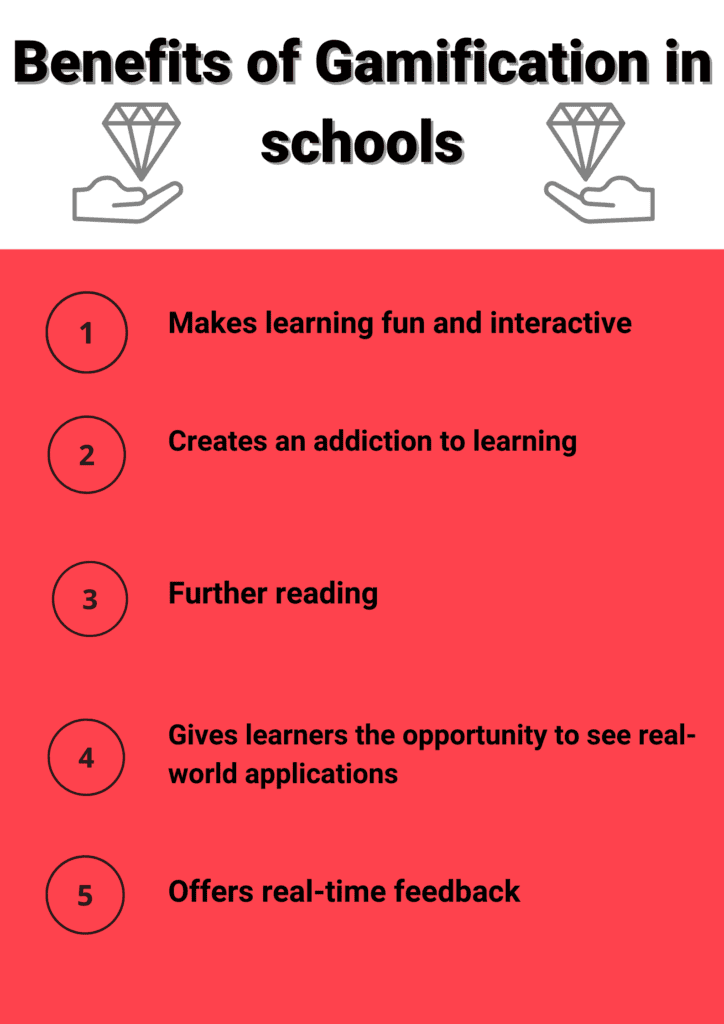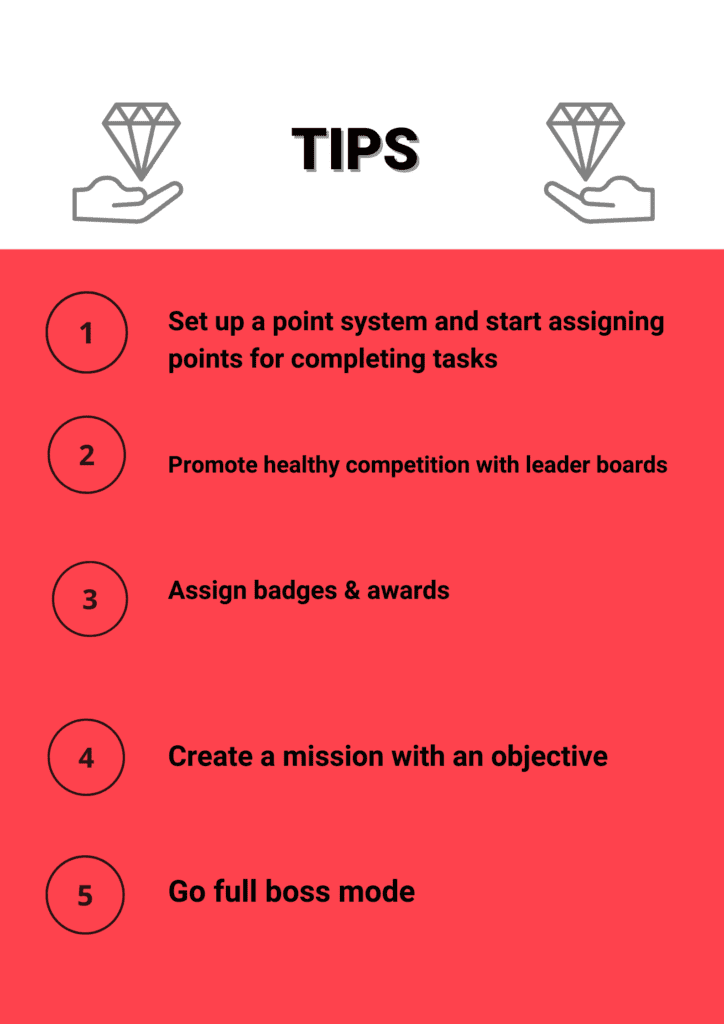Do you want to see the benefits and tips for gamification in schools?
24 May 2025
Estimated reading time: 5 minutes
Gamification in Schools has become one of the major advancements of the beginning of the twenty first century, pervasively spanning across also multiple other domains such as technology, culture, society, healthcare, and economics.
Economic, cultural, and societal developments in which reality is becoming more gameful, and, to a greater extent, can afford the accruing of skills.
BENEFITS of Gamification in Schools
Here we can see a list of the benefits of gamification in schools and will be very useful to understand each part of it.

- Makes learning fun and interactive
Gamification of learning can help you create exciting, educational and entertaining content. It’s not about turning work into a game, but about playing with the psychology that drives human engagement.
Creates an addiction to learning
Another, rather surprising, benefit of gamification in learning is the natural high it can give us, and the impact that ‘high’ has on the retention of knowledge.
When our brain wants to reward us, it releases dopamine into our bodies, so when we win a game or achieve something important to us, we feel good.
- Further reading
Learning about new things is, for many, a rewarding experience which causes dopamine release, and the rather fortuitous outcome of that natural drug ‘fix’ is that the increase in dopamine levels helps us retain that new information.
- Gives learners the opportunity to see real-world applications
The third benefit of gamification is all about getting your hands ‘dirty’. Learning on the job can be a very effective way of cementing skills by applying them to practical scenarios.
- Offers real-time feedback
The gamification in schools of learning allows employees to work towards real-time, measurable, meaningful targets, and get upper-level feedback as those targets are achieved.
Gamification enhances the learning experience
We’re going to ‘cheat’ and give you a list within a list. Here are five more benefits of gamification in learning.
- More engagement with content
Gamification in e-learning offers the opportunity for learners to engage with content in an effective, informal learning environment. If learners get excited about learning, they are more likely to retain information.
- More fun, efficient learning
Gamification makes learning fun and so learners are far more likely to engage with an enjoyable learning program than a boring one.
- Competition= motivation
Many people are motivated by competition. Gamification provides opportunities for competition with others for high scores, rewards and leader-board rankings.
- More cooperation
Learners in gamified learning programs can work towards group goals by cooperating with a team within a competitive environment. This encourages the sharing of ideas, debate, critical thinking and strategic thought processes.
- Further reading
From an early age we are taught to learn through play. Why should this stop when we reach adulthood? Gamification is the exciting trend that for some time now has been breathing new life into corporate learning. This technique can help organizations confront serious corporate challenges including how to enhance learner engagement and make learning part of the flow of work
If you would like read more of this or similar posts, you can see our page and learn more of this here.
IS GAMIFICATION in SCHOOLS EFFECTIVE?
Gamification in Schools has been shown to be tremendously effective, both in educational settings, e-learning settings and even for corporate companies using it to train employees.
Gamification in Schools works for the following reasons:
- Games play into basic needs (autonomy, value, competence etc.)
- Games can be social (games may have leaderboards, for example, or places where high-scorers are displayed so players can feel validated when they do well. Players may be able to challenge their friends or invite others to play)
- Games encourage ongoing engagement (gamification helps retain users by encouraging them to keep playing and gain more points, rewards, or simply discover more information)
- It gives players (learners) control (they feel like they are in charge of their own learning journey, going from point A to point B).
Gamification in Schools works because it triggers real, powerful human emotions such as happiness, intrigue, excitement and accomplishment. All around the world, companies, institutions and household brands are using gamification, with marvellous results.
TIPS
- Set up a point system and start assigning points for completing tasks
If integrated with class activities, point systems allow students to visualise their progress and encourage their motivation!
- Promote healthy competition with leader boards
Creating competition among peers is a great way to improve performance. What’s more, you can create more than one leaderboard based on different achievements
- Assign badges & awards
Reward-based systems are excellent to show your class that you value effort and hard work.
-For example, you can create a criterion based on points and assign badges. Or even term-end awards.
- Create a mission with an objective
Unleash your creativity! Use apps like Google Slides and create a quest where students need to unlock objectives to move forward.
For example, you can create a cross-curricular mission that includes Maths, reading and science, and put a badge on the line!
- Go full boss mode
Are you ready to take up the mantle at the end of point 4’s quest? Prepare a list of more challenging questions and ask your students to answer with a time limit.
You can even split your pupils into teams and let them cooperate to win.

In conclusion, we have been able to see the different parts of the benefits and the tips about it. We have been able to go deeper into each section and thus understand what gamification in Schools is in each sense.
If you would like learn more of this type of blogs, you can see our page here.
I hope you liked it and were able to learn new knowledge.
